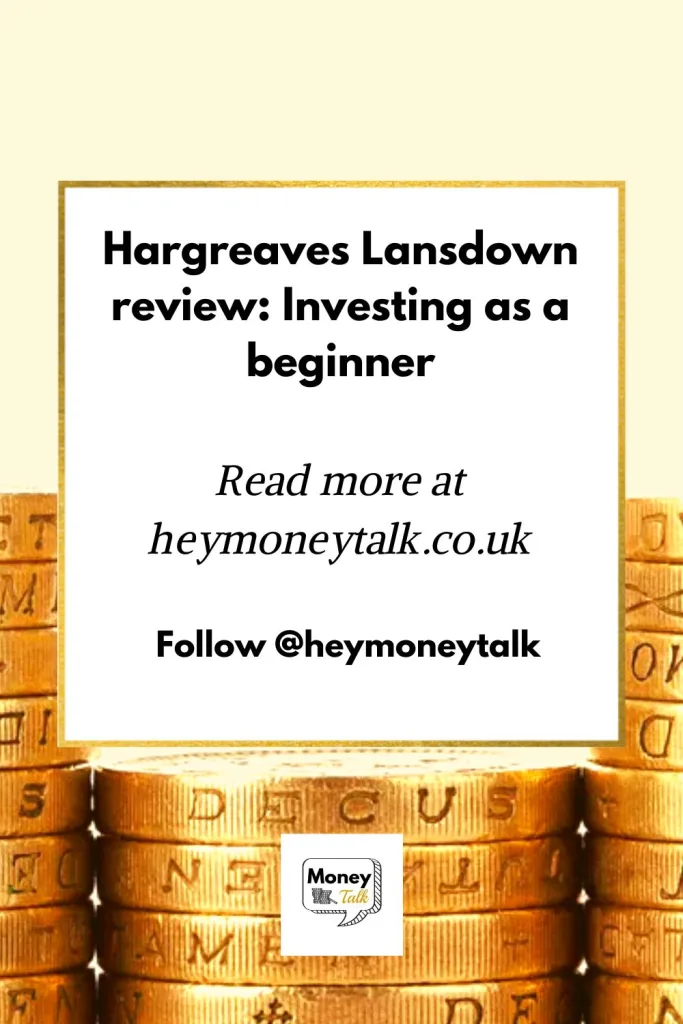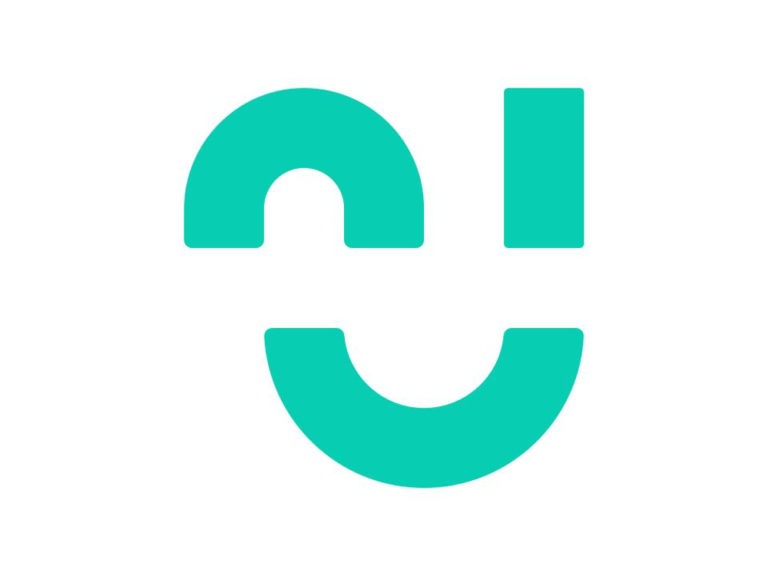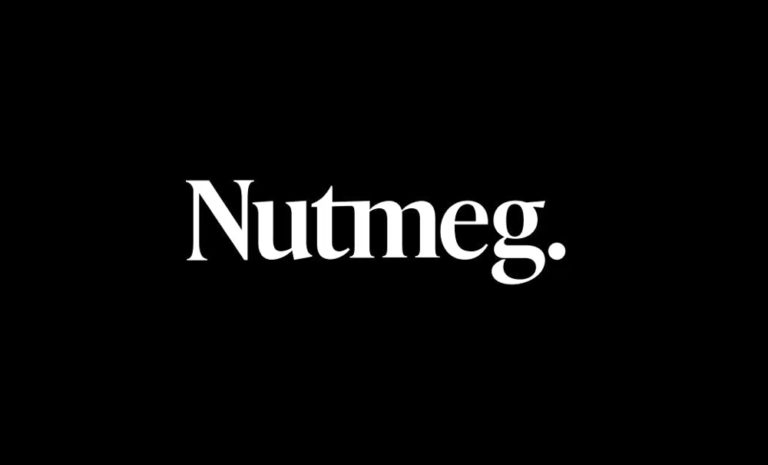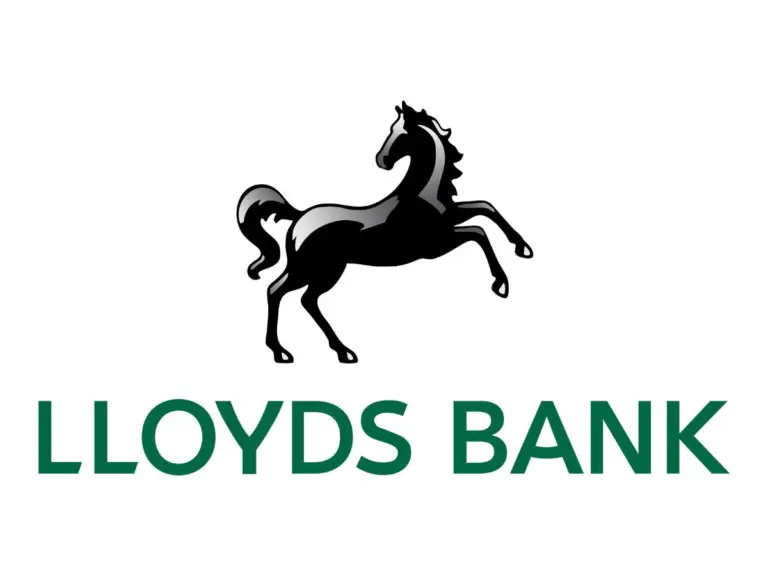Hargreaves Lansdown review: Are they good for novice investers?
Money Talk is intended to inform and educate; it's not financial advice. Affiliate links, including from Amazon, are used to help fund the site. If you make a purchase via a link marked with an *, Money Talk might receive a commission at no cost to you. Find out more here.
I first started using Hargreaves Lansdown in 2021, when I was just getting started with investing.
It was an investment platform that I was testing alongside Nutmeg, and just one of many that’s open to me.
In the years since, I’ve not only transferred over my stocks and shares ISA from Nutmeg, but I’ve also transferred in my pension portfolio from PensionBee.
Want to know why I’ve gone all in on this one investment platform? Read my Hargreaves Lansdown review to find out.
A little disclaimer
Before I begin, a little disclaimer.
Investing doesn’t guarantee returns – you could lose some or all of the money you put in.
Be prepared for the risks and don’t put more money in than you can afford. Don’t be that person who borrows to invest.
Also, do your own research – or get a qualified financial adviser to do it if you don’t have time.
What might work for me at a particular time might be a terrible choice for you and vice versa.
What Hargreaves Lansdown offers
Hargreaves Lansdown actually calls itself a financial services company.
That’s because in addition to investing, you can use it to manage cash savings through its active savings account* and send money abroad*.
Arguably though, most people think of it as an investment platform for buying and selling funds and shares, and that’s what it does best.
For buying and selling funds and shares (and bonds, gilts and investment trusts), you can go through one of these products:
- Fund and share Account
- Stocks and shares ISA
- Lifetime ISA
- Junior ISA
- Cash ISA
- Self invested personal pension (SIPP)
- Junior SIPP
They’re basically wrappers that hold your investment, and determine what tax you pay, if any.
Why I chose Hargreaves Lansdown
There are a lot of investment platforms out there and Hargreaves Lansdown is one of the better known ones.
Other options I considered were AJ Bell Youinvest, Interactive Investor*, Vanguard, Wealthify and MoneyBox (this last one is newer to investing).
Hargreaves Lansdown is actually not the cheapest in terms of fees (more below) but it has a few things going for it.
Big selection of funds
Different platforms offer access to different funds, and some offer more than others.
Hargreaves Lansdown has one of the biggest fund selections on the market at over 3,000 options to choose from.
I personally focus on funds rather than shares because they tend to be less volatile, which helps to spread risk; and they don’t need as much hands on, which saves me time.
Free fund trades
It’s completely free to trade funds on Hargreaves Lansdown, which saves me money in the long run.
The funds themselves charge a management fee that’s separate to Hargreaves Lansdown, and varies from fund to fund.
But thanks to its size, Hargreaves Lansdown often offers a discount on these fees. It potentially means these funds are much cheaper to hold than elsewhere.
Easy for the time-poor
Hargreaves Lansdown compiles a Wealth Shortlist*, which is updated and reviewed regularly.
It’s essentially a whittled-down list of funds that Hargreaves Lansdown analysts believe can deliver great returns over the long run.
It doesn’t mean all the other funds are duds, but it does present a good place to start, which is great for those short on time.
You should still read the detailed analysis though, and look at what investments are in the fund.
If you’re looking to diversify your portfolio, it’s important to look not only at which companies the fund has invested in but also where in the world those companies are and what sectors they operate in.
Lots of expert analysis
Hargreaves Lansdown has invested a lot of money into research as well.
It publishes and regularly updates analyses of funds that help investors to decide whether or not to buy it.
This was precisely what I needed when I first got into investing.
A great app
And last but not least, it has a really great app that’s easy and straightforward to use.
It’s one of the things that originally attracted me to Nutmeg so it didn’t seem like too big a leap to move to Hargreaves Lansdown.
How much are Hargreaves Lansdown’s fees?
Hargreaves Lansdown has a few different fees depending on what product you hold with them and the size of your portfolio.
It’s also known to offer lower fees to investors who have a larger portfolio before they reach those thresholds.
Annual charges
Active Savings, cash ISA and junior ISA are the three products that have no annual charges at all.
For fund and share, stocks and shares ISA, SIPP (self invested personal pension), junior SIPP, and xrawdown pension, there are separate charges for funds and other investments.
For funds, the annual charges are:
- 0.45% for portfolios up to £250,000
- 0.25% for portfolios between £250,000 and £1million
- 0.1% for portfolios between £1million and £2million
- Nothing on portfolios over £2million
For other investments, which includes shares, investment trusts, exchange-traded funds (ETFs), gilts and bonds, the annual charges are:
- Fund and share – none
- Stocks and shares ISA – 0.45% (capped at £45 a year)
- SIPP – 0.45% (capped at £200 a year)
- Junior SIPP – 0.45% (capped at £200 a year)
- Drawdown pension – 0.45% (capped at £200 a year)
The annual charges for the LISA are a little bit different. For funds, it charges
- 0.25% for portfolios up to £1million
- 0.1% for portfolios between £1million and £2million
- Nothing on portfolios over £2million
And for other investments, it’s 0.25% (capped at £45 a year).
Dealing fees
Aside from annual charges to hold your portfolio with Hargreaves Lansdown, the investment platform also charges dealing fees.
There’s no fee to trade funds, although you should be prepared to pay the fees charged by the funds themselves.
For any other investment, it depends on how you trade and how often you trade.
For deals made online, you’re charged:
- £11.95 per deal for 0 – 9 deals
- £8.95 per deal for 10 – 19 deals
- £5.95 per deal for 20 or more deals
If you prefer to do things over the phone or by post, the fee is set at 1% of the trade value with a £20 minimum and £50 maximum charge.
The exception to these charges are the products geared towards children.
Dealing funds are free of course but for other investments, it’s a £5.95 per deal flat rate for the junior SIPP and free for the junior ISA
Background on this Hargreaves Lansdown review
My experience with Hargreaves Lansdown was little bit different because unlike the other platforms I’ve tested so far, I was the one picking out funds.
Hargreaves Lansdown actually offers a handful of ready-made portfolios* for those who prefer to leave it up to the experts.
But I wanted to experiment and learn more about investing so I decided to choose my own.
Because of this, it doesn’t really make sense to talk about portfolio performance – at least not in the same way I did for PensionBee or Nutmeg.
My experience with Hargreaves Lansdown
When I opened my account with Hargreaves Lansdown in 2021, I went with a LISA first.
It was a relatively small amount of money. And because the LISA is designed to be a retirement product, it gave me plenty of time to experiment with this portfolio.
That means room to make mistakes, and time to correct those mistakes too.
My investing journey has certainly been far from plain sailing.
At one point in 2021, my portfolio plummeted in value; some funds in my portfolio are still trying to recover three years later.
I quickly realised that my original investing strategy was completely wrong, and adjusted accordingly.
In some respects Hargreaves Lansdown gave me exactly what I needed to learn.
It was basically a platform where I could make my own decisions and take as much or as little advice as I wanted or needed.
I wouldn’t recommend this approach to everyone, but it worked for me.
And it put me in a good position when I opened my stocks and shares ISA with them, and then a SIPP.
A verdict on Hargreaves Lansdown
You know when brands ask you whether you’d recommend them in surveys?
I would certainly tick yes for Hargreaves Lansdown.
It’s easy to open an account, the app and website are intuitive, and I love all the extra information Hargreaves Lansdown provides to help me come to a decision.
Of course I worry about how the funds I pick will perform in the long run, but that’s why it’s worth reviewing your portfolio once in a while.
How safe is Hargreaves Lansdown?
No investment is 100% safe – you might win, you might lose.
But as an investment platform, Hargreaves Lansdown is well regarded.
It has over 40 years of experience, and manages one of the largest investment portfolios.
It’s regulated by the Financial Conduct Authority, and any money invested is protected by the Financial Services Compensation Scheme (FSCS).
So if Hargreaves Lansdown goes bust, you should be able to get your money back up to £85,000 from the FSCS.
You can’t claim if you simply lost money because your investments fell in value though.
Hargreaves Lansdown has more details on what that means here*.
It’s worth bearing in mind that if the worst comes to the worst, it might take you a while to get your money back – another reason why you need an emergency fund and shouldn’t see any investment portfolios as easy access.
This post was originally published in September 2022. It was updated in July 2024.
Pin this for later








